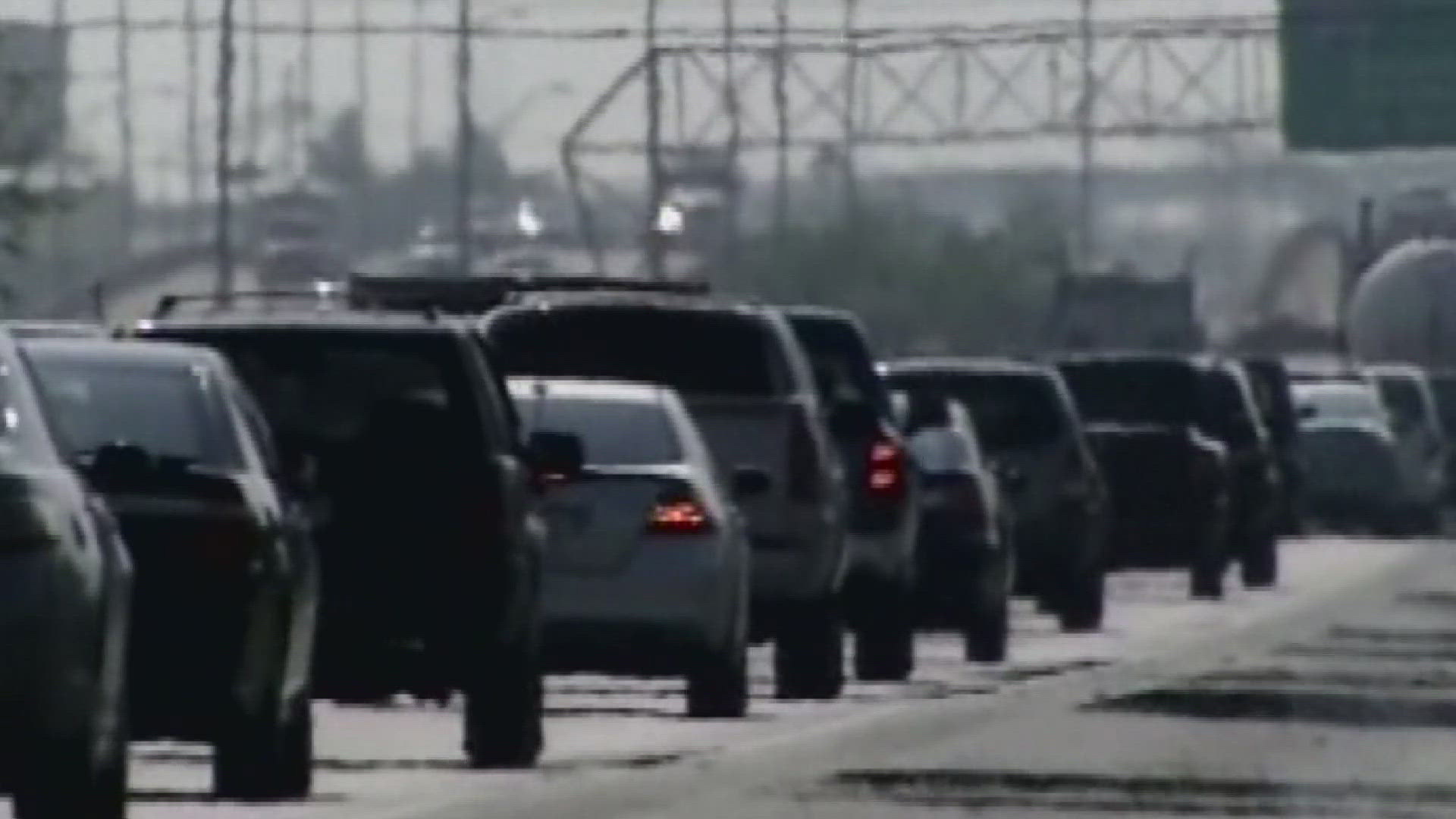NEW ORLEANS — Many who evacuated during Hurricane Katrina have vivid memories of contraflow, in which thousands of cars crawled for miles side-by-side in a desperate attempt to flee New Orleans. Contraflow is a complicated process that takes a long time to implement and has become more unlikely as storms have begun intensifying more quickly. Because of that, leaders urge residents not to wait for contraflow to evacuate.
Contraflow involves reversing half the lanes of a road so they all point the same direction, in this case, away from a coming storm. Southeast Louisiana’s contraflow routes can be found here. The plan has only been used twice– once before Hurricane Katrina, then again before Hurricane Gustav.
It is a “last resort,” said Rodney Mallett, the Louisiana DOTD’s Communications Director. He explained that in order for the DOTD to begin implementing contraflow, there has to be a mandatory evacuation in New Orleans, a category 3 or higher storm, and, most importantly, time for crews to do the physical work of reversing miles of interstate lanes.
“I don't even know how many hundreds of signals we have to work on,” Mallett said Thursday. "We have to put up barricades, we have to put out the orange cones… it's not something that we can just do willy-nilly.”
Right now, the DOTD requires 72 hours of notice to implement contraflow. That time window was unavailable during Hurricanes Ida, Delta, or Zeta.
“If the storms keep increasing and coming at us that much quicker, I think it gets us further and further away from being able to implement contraflow,” said Jefferson Parish President Cynthia Lee Sheng. She spoke at a press conference last month, urging residents to evacuate as soon as possible if a storm is approaching.
“I think there was an old feeling that, ‘we're going to wait, and if it gets bad enough, the state or local officials are going to call for contraflow and we're going to wait to hear the word ‘contraflow’ before we leave,” she told WWL Louisiana over Zoom on Thursday, “and I don't want people to get caught up in that trap… ”
There is an ongoing attempt to shorten that 72-hour window. At a City Council committee meeting last month, Collin Arnold, Director of the New Orleans Office of Homeland Security and Emergency Preparedness, said he was working with state officials, “trying to maybe bring down that timeline in any way possible.”
Mallett concurred though he added that for the 2024 hurricane season, the timeline remains the same. “We're having a very hard time minimizing that 72 hours, that does not mean that we can't come up with an alternate plan,” he said.
While there are no threats in the Gulf, Mallett urges residents to make an evacuation plan in case it is needed.
He said a northbound route is better than I-10, as they tend to be less crowded. During Ida, he said, “It took people 15 hours to get to Houston, which is incredible. It took people eight to get to Dallas.”
► Get breaking news from your neighborhood delivered directly to you by downloading the new FREE WWL-TV News app now in the IOS App Store or Google Play.

